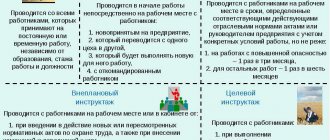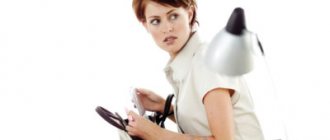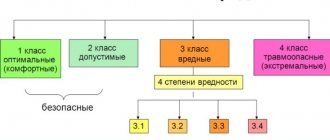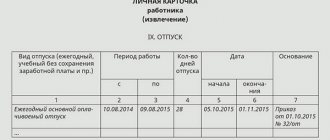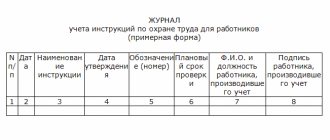Greetings to all! I don’t know about you, but in NSK City the temperature outside is -37 degrees, the southwest wind is 1 m/s, 761 mm Hg. Art. and 81% humidity. People look like hedgehogs in the fog, fluently moving their legs so that they don’t freeze. Meanwhile, what’s outside my window, to lift your spirits, I suggest checking out two funny “documents”: labor safety instructions for office plankton on the rules of effective behavior in office and a Memo to the company employee.
I don’t know about you, but in NSK City the temperature outside is -37 degrees, the southwest wind is 1 m/s, 761 mm Hg. Art. and 81% humidity. People look like hedgehogs in the fog, fluently moving their legs so that they don’t freeze. Meanwhile, what’s outside my window, to lift your spirits, I suggest checking out two funny “documents”: labor safety instructions for office plankton on the rules of effective behavior in office and a Memo to the company employee.
For those who are bored and/or hard at work, hang in there, I wish you Peace!
General labor protection requirements
1.1. To perform the duties of an office plankton, persons who are at least 18 years of age, fit for health reasons and have completed all possible types of instructions can be hired:
- induction training;
- fire safety instruction;
- initial training at the workplace;
- training in safe labor methods and techniques;
- instructions on electrical safety in the workplace and testing of mastery of its content;
1.2. Office plankton must pass:
- internship, under the supervision of an experienced office bum for 2-14 shifts;
- etc.
1.3. Office plankton must:
- treat the issued office supplies with care;
- comply with the requirements of these instructions;
- smoking in strictly designated places;
1.4. The main hazardous production factors of office plankton under certain circumstances may be:
- bosses and boss bosses;
- constant sitting on a chair;
- the amount of burned Internet traffic;
- increased tension;
- increased visibility of work being done;
- fatigue;
- frequent consumption of intoxicating liquids (coffee, tea);
- etc.
1.5. Persons who fail to comply with or violate these instructions are subject to disciplinary liability in accordance with the current legislation of the Russian Federation.
On-the-job training in the office
Work in the office should begin with training.
Poster on labor safety training
Table 1. Types of occupational safety briefings
| Type of instruction | Description |
| Introductory | It is carried out before an employee is hired to work in an office company. The person is not yet employed and does not know the nuances of the work process, so you first need to talk to him, ask a few questions, and then sign in the journal. It is conducted by an occupational safety specialist who has a certification noted in the certificates. |
| Primary | Before starting to perform production tasks, you need to make sure that the employee has knowledge of all the nuances of working in the office. To do this, the manager conducts an initial briefing, which stipulates all the nuances of work at a given place, including familiarization with the special assessment card for working conditions. |
| Repeated | As time passes, the employee begins to forget about his own safety and, in order to remind him of basic measures, regulations provide for periodic conversations, that is, reminders about safety. This type of instruction is provided for this purpose. |
| Unscheduled | It is carried out if an emergency situation occurs in an office company. When replacing or upgrading equipment, if new occupational safety instructions have been introduced or new norms or rules have been regulated, if an accident has occurred or circumstances have arisen in which there was a threat to human life, then an unscheduled meeting is held. Employees are informed of the requirements prescribed by regulatory acts on occupational safety. |
| Target | This type of instruction is regulated in cases where an employee is sent to engage in another type of activity. For example, for cleaning the area or watering the lawn. It is not necessary to conduct certification in these areas, but it is necessary to provide instructions. |
All types of briefings are regulated by state standards.
Watch the safety briefing for office workers in this video:
Labor protection requirements before starting work
2.1. Have 2 jackets at your work place;
2.2. If you work in a large office, always leave a spare jacket on the back of your chair. It gives the impression that you are somewhere here and have stepped away for a moment. Wear a second jacket when you are walking or solving personal problems during work hours;
2.3. Include everything you can;
2.4. As soon as you come to work, turn on your computer, turn on all possible tabs and programs installed on your computer.
Safety requirements during operation
During the execution of a production task, the PC user is obliged to:
- Perform only the work that was assigned to him by the manager, as well as for which he was instructed.
- In the process of performing tasks, it is necessary to know and comply with the norms prescribed by sanitary rules and regulations.
- When entering information, select the optimal physiological mode, that is, set the desired brightness on a white background.
- It is necessary to take breaks during work, that is, perform industrial gymnastics or know a set of exercises specially designed to relieve the muscles of the neck, shoulder joints and head.
- The distance from the monitor to the operator’s eyes should be from 0.5 to 0.6 m.
Computer safety poster
Several requirements for what not to do when performing tasks:
- If the power is turned on, do not touch the back panel of the system unit to avoid injury from static electricity or insulation breakdowns.
- When the power is on, do not switch connectors or cables.
- There should be no different papers or other objects on the top panels.
- Do not allow moisture to get on the system unit or monitor, keyboard, photocopier, printer or disk drive to avoid electric shock.
- If the equipment has been outside for a long time at sub-zero temperatures, it is not allowed to be turned on immediately. It is necessary to let the equipment stand at home for six hours.
- A PC user cannot repair a PC on his own, as he is not certified to perform this work, and this can lead to unpredictable consequences.
If the listed regulations are followed, the safety of technological processes will be ensured.
Animated film on occupational safety and health in the office:
Labor protection requirements during work performance
3.1. Never leave the office without papers in your hands;
3.2. People carrying papers give the impression of being hard workers on their way to an important meeting. Empty-handed people look as if they are going to the cafeteria or to smoke. In addition, try to take more papers home to create the impression that you are working there too;
3.3. Walk quickly;
3.4. The employee, lazily wandering along the corridor, is clearly looking for an adventure on his ass. You should move very quickly, at times breaking into a light trot. By doing this, you will not only position yourself as an extremely energetic worker who saves every second of working time, but will also protect yourself from petty orders from your superiors: after all, in order to puzzle you, he will have to first catch up with you!
3.5. Sit more often with a gloomy face at your PC;
3.6. Computers provide the impression of being busy. A person sitting with a serious face in front of a computer screen looks very smart. At the same time, you can read personal mail, chat or play solitaire. If your boss catches you doing this, explain that you are mastering new programs and saving the company the cost of training;
3.7. Ensure periodic accumulation of business documentation on the desk;
3.8. Only top management can have a clean desk. For everyone else, this is a sign that they are doing nothing. Place thick stacks of documents all over your desk. From the outside, last year’s documents look the same as the current ones: it’s the volume that matters. Place more documents in different piles. If you are waiting for someone, put the document that person needs in the middle of the pile and find it there when that person appears;
3.9. Properly organize the answering machine functionality on your landline phone;
3.10. Never answer the phone if you have an answering machine. People don't call to ask about your health - they call to get you to do something. This will not work. Listen to messages on their answering machine from time to time, and if someone left you a message with a potential increase in work, call them back during a break when they are definitely not there and leave a message on their answering machine;
3.11. Provide yourself with a businesslike expression;
3.12. Down with sugary sweetness in relations with your superiors! On the contrary, always try to look irritated; this will give the boss the impression that you are in trouble. Watch your face; it should not lose its chronically preoccupied expression;
3.13. Improve your vocabulary;
3.14. Read computer magazines and choose unknown words. Use them freely in speech when talking with your superiors. Remember: he doesn’t have to understand you, but it will sound impressive;
3.15. Aerobatics;
3.16. This is not easy, but with regular training it can be mastered. The exercise is performed in an office chair. Sit comfortably. The left hand supports the right hand under the elbow. On the right you hold a document - one or two pages. The document covers your face. And no one sees that you have been sleeping soundly for a long time;
3.17. Take notes;
3.18. It would be good form if, during your boss’s speech, you take out a notepad and start quickly writing something down there. Don't forget to nod in agreement from time to time. It is best to write down Mayakovsky's poems, since they are written in sections and with a large number of exclamation marks;
3.19. Clutter your computer desktop with unnecessary files and documents.
3.20. Print these unnecessary documents often;
3.21. When communicating on the phone with loved ones, pretend that you are communicating with a business partner;
3.22. Prohibited:
- throw pencils up (at the ceiling);
- slide down from a chair below table level;
- wear pants that are frayed in the back.
Regulatory framework of the organization of labor protection
Regulatory documents regulating the field of occupational safety and health in the Russian Federation:
- Labor Code.
- Federal laws No. 69-FZ, 125-FZ, N 123-FZ, N 384-FZ, 426-FZ.
- Resolutions, Orders. Order of the Ministry of Labor of Russia dated December 29, 2014 N 1197, Decree of the Government of the Russian Federation dated December 27, 2010 N 1160, Order of Rostrud dated November 10, 2017 N 655, Decree of the Ministry of Labor of Russia dated 02/08/2000 N 14.
- GOST standards. GOST R 12.0.001-2013, GOST 12.0.002-2014, GOST R 54934-2012/OHSAS 18001:2007, GOST R 12.0.007-2009.
- Sanitary and building standards.
Each industry has its own standard regulations and sample instructions.
https://youtu.be/M_ZIJtW403k
Occupational safety requirements in emergency situations
4.1. Yell louder;
4.2. Loud-mouthed employees give the impression of being decisive, self-confident leaders; such people can be trusted with the team if something happens;
4.3. Complain to everyone;
4.4. Wherever you are at a production meeting, in a smoking room, in a cafe, at a picnic organized for employees, never miss the opportunity to complain about the overload and the influx of urgent matters awaiting immediate resolution. Don't forget this important little detail! A day without a complaint is a wasted day.
Labor protection requirements upon completion of work
5.1. Leave work late;
5.2. Always try to leave work later, especially when the boss hasn't left yet. During this time, you can do crossword puzzles or read magazines that you don’t have time for. On your way home, be sure to pass by your boss's office. Send him important emails after hours (10:10 pm, 7:05 am), and on weekends and holidays.
Attention! The author does not encourage or approve the implementation of the provisions of this instruction. We are not responsible for the information provided in this manual and its implementation.
We are not responsible for the information provided in this manual and its implementation.
1. Clothes We advise you to dress appropriately for your salary. If you wear expensive suits and bags, you are doing too well and don't need an increase. If you dress poorly, you need to learn to manage money better and you don't need a raise. If you dress averagely, you are spending your money wisely and don't need an increase.
2. Sick days We no longer accept doctor's notes. If you can get to the doctor, you can get to work.
3. Surgical interventions Surgeries are now prohibited. While you work for us, we need all your organs. You cannot delete anything. You were hired as a whole. Any operation can be a reason for dismissal.
4. Personal days (note: Absence for personal needs is not paid) Each employee has 104 personal days per year. They are called Saturday and Sunday.
5. Vacations All employees will go on vacation at the same time. Vacation days are January 1, March 8 and May 1.
> 6. Absence due to own death May be the reason for absence. However, you must give us two weeks' notice in order to have time to train the newly hired employee.
7. Bathroom Usage We have determined that employees spend too much time going to the toilet.
In the future we will introduce visits in alphabetical order. Workers with a last name starting with A will go to the toilet from 8:00 to 8:20, with a B from 8:20 to 8:40, etc. If you were unable to use your time, you will wait until the next day. In an emergency, you can swap with a colleague, but written permission from both supervisors is required. Additionally, a three-minute restriction on the use of the booth is introduced. At the end of three minutes you will hear a beep, the toilet paper will be pulled into the box, the door will open and a photo will be taken. In case of repeated violation, the photograph will be published in the wall newspaper.
8. Lunch break Establish the following lunch break rules: thin employees are given 30 minutes for lunch (they must purchase a uniform so as not to discredit the Company with their sickly appearance); employees of normal build – 15 minutes; those who are overweight – 5 minutes (enough to swallow a diet pill and wash it down with water)!
Thank you for serving our company! We do our best for you. However, all questions, comments, fears, concerns, complaints and suggestions can be directed elsewhere. Have a nice work!
Results
The development of labor safety instructions is an important part of the activities carried out by the employer to prevent the impact of hazardous and harmful factors on the health of workers. However, we can say with confidence that labor protection not only reduces the likelihood of injury and illness among personnel, but also contributes to the creation of comfortable working conditions, thereby increasing labor productivity.
The choice remains with the employer: pay fines or ensure the loyalty and high performance of the enterprise’s personnel by carrying out a set of labor protection measures.
You can find more complete information on the topic in ConsultantPlus. Full and free access to the system for 2 days.
BONUS with cool cards! The theme is office!
That's all. Have a good day!

